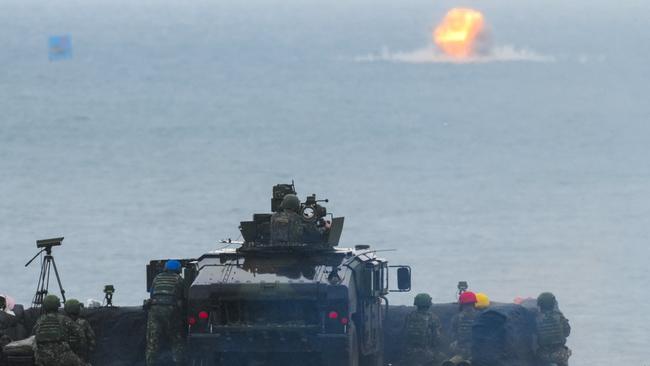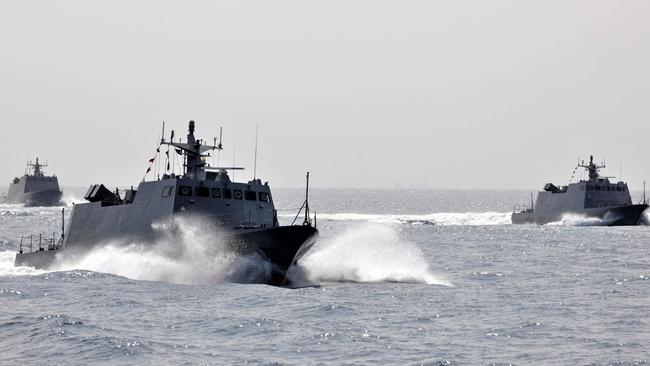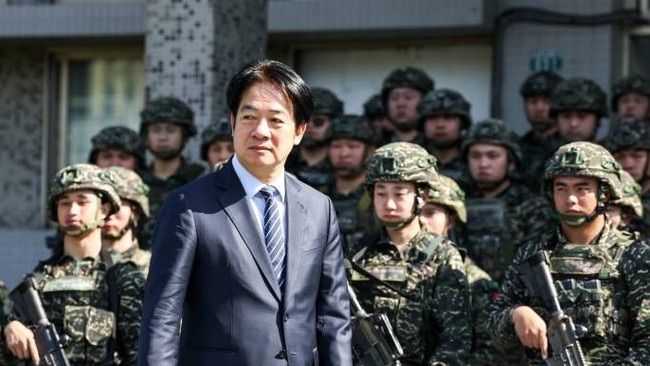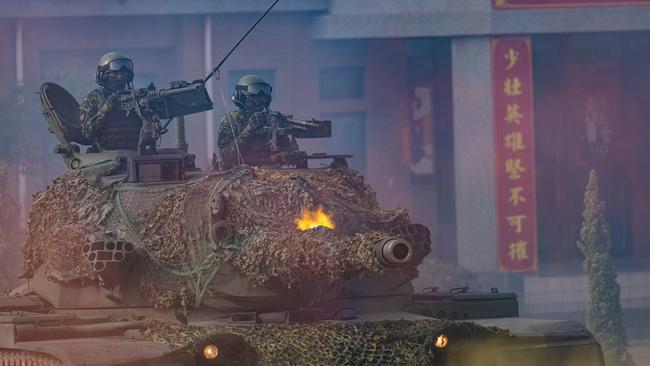Taiwan’s new strategy: make China fear pain of an invasion
Facing a rising threat from Beijing, Taiwan races to overhaul its military and secure US President Donald Trump’s backing.

Taiwan’s leaders have embarked on an urgent overhaul of the island’s defences to prepare for what they see as the possibility of a Chinese invasion by 2027. The purpose: be able to hold on long enough for the US to come to the rescue.
But many doubt the self-governing island, which Beijing claims as its own, can be ready in just two years, given the radical changes it is pursuing.
Taiwan wants to scrap a longtime focus on equipping the island for a conventional war. Instead, it is racing to build up new, asymmetric defences aimed at making China’s much more powerful military think twice before attacking. Failing that, it aims to inflict enough pain to slow China while it seeks help from Washington.
How quickly Taiwan upgrades its military could determine whether Beijing decides to invade, and whether it would succeed in seizing the island.
“They are improving their military readiness in all three areas: policy, procurement and personnel,” said Mark Montgomery, a retired rear admiral who is now a senior director at the Foundation for Defense of Democracies, a Washington think tank.
“But this is a five- or six-year-to-go process, and they need to get to work on each one of those as fast as they can.”


Many military experts say that China isn’t yet ready to overcome the geographical and
military obstacles to an invasion. However, recent Chinese exercises simulating a blockade of the island have jolted Taiwan, which worries that the drills could be a precursor to an attack.
Meanwhile, Taiwan’s leaders want to show US President Donald Trump that they are doing enough to deserve US military intervention in case of a Chinese attack, after he said Taiwan needs to do more in its own defence.
Taiwan’s defence ministry said foreign military assistance is one of several ways it is accelerating the build-up of its defence capabilities and not the only option. “It’s our country and we will defend it ourselves,” it said.
A different type of war
Taiwan’s goal now is to build layers of coastal defences to hold off an amphibious invasion. That involves stockpiling new weapons and expanding and training an army that can use them. Taiwan’s navy is establishing a coastal command, a shift from a focus on control of the sea to a focus on fending off attacks.
The overarching approach is known as the “porcupine strategy,” in which points of resistance are established throughout the island to deter and inflict pain on a larger adversary.
“With this solid military buildup employed through asymmetric approaches …[China] will learn that any attempt to invade Taiwan would not only entail significant costs but also prove futile,”
Defence Minister Wellington Koo wrote in a defence blueprint published in March.
Using weapons that are cheaper to acquire and faster to deploy will be key to fending off China, said Alessio Patalano, professor of war and strategy in East Asia at King’s College London.
Taiwan’s approach has been influenced in part by Ukraine’s successes fighting Russia’s invasion. It plans to buy more than 3200 drones from domestic companies in a five-year period to boost local production – mirroring Kyiv’s homegrown drone makers – in an industry dominated by China. The army opened an academy last year to teach soldiers how to operate them.

Another lesson from Ukraine has been that weapons and ammunition can quickly be depleted. Taiwan’s geography would make resupply a challenge if China has it surrounded.
“We definitely need to further increase our stockpile of antiship and air-defence missiles,” Chen Ming-chi, deputy foreign minister, said in December before he took his current role.
The obstacles to the new strategy are considerable.
Koo, a rare civilian to serve as defence minister, has to contend with an army establishment that has been committed to preparing for a conventional war for a generation.
Trump’s return to the White House has also raised the pressure on Taiwan. He and members of his administration have suggested Taiwan should spend as much as 10 per cent of gross domestic product on its military – a tall order for Taiwan when the figure has long hovered around 2 per cent.
Buying the smaller and cheaper weapons that would be used in an asymmetric conflict could also make it harder for Taiwan to satisfy that demand.
President Lai Ching-te said in March he would raise military spending to 3 per cent of GDP by the end of the year, but he has encountered resistance to his budget in parliament from opposition politicians who advocate a friendlier approach toward Beijing.
Taiwan’s military “will only be as ready and as proficient as the Taiwanese people and the Taiwanese political elites want them to be,” said Patalano, of King’s College London.

Building an army
One of the biggest obstacles facing Taiwan’s military is staffing. It has set a goal of having a military numbering around 215,000, which would still be dwarfed by China’s two million-strong force.
At the end of last year, only 78 per cent of Taiwan’s military positions were filled, according to the defence ministry. It has been difficult to draw recruits from an educated young population raised in an era of economic growth and demilitarisation.
Meanwhile, the conscription pool is shrinking in Taiwan, which has one of the world’s lowest birthrates.
“There is already an understaffing of volunteers in combat units,” said Chieh Chung, a defence analyst who teaches at Taiwan’s Tamkang University. Increasing demands for combat readiness and force-building exacerbate the problem, he said.
Mandatory military service was tripled last year to 12 months. To make enlistment more appealing, the military has raised salaries by 3 per cent – or as much as $US400 a month – and upgraded dormitories.
A recruitment campaign is under way, with ads on buses that run through the heart of Taipei showing three uniformed cadets with the tagline: “Safeguard the homeland, create an extraordinary life.” The military is looking to upgrade its reserve forces, in particular by improving its ability to quickly mobilise reservists.
Training has been reoriented in line with strategic changes. In the past, conscripts rarely left their bases to train or handled sophisticated weapons. Taiwan is increasingly training soldiers to use drones and more advanced weapons, such as Stinger surface-to-air missiles, in locations where they would be expected to defend the island.
Co-ordination with the US
For Taiwan’s military to be prepared to fend off China, it will also need to know how to work together with the US in a time of crisis. The US and Taiwan are still learning to co-ordinate their combat plans and are far from being able to conduct a joint operation, said Chung, the defence analyst.
“Taiwan really needs to co-operate more closely with the US,” said Chen, the deputy foreign minister. “Taiwan has almost no experience with war, so we need to learn from those with the most experience.” The Pentagon didn’t respond to a request for comment about US military co-operation with Taiwan.
Taiwan will also need to know if US forces will show up. Officials in Taipei – who watched with alarm as Trump dropped US support for Ukraine – are increasingly confident they have the US president’s backing as the White House confronts Beijing.
Dow Jones Newswires






To join the conversation, please log in. Don't have an account? Register
Join the conversation, you are commenting as Logout